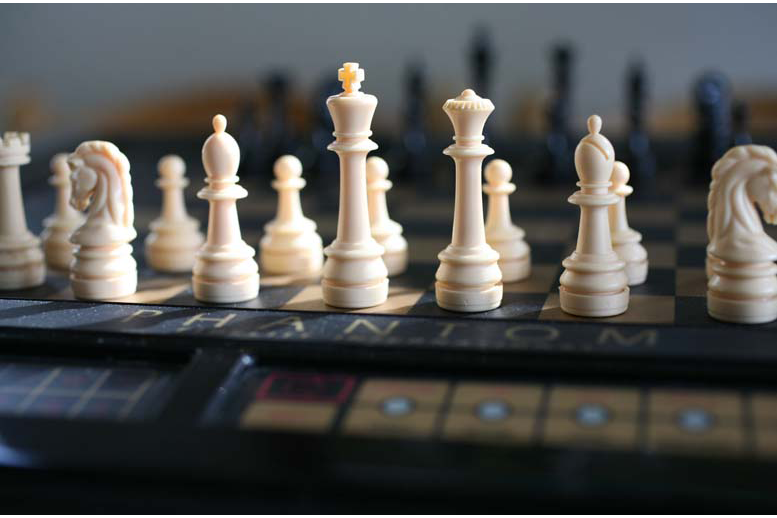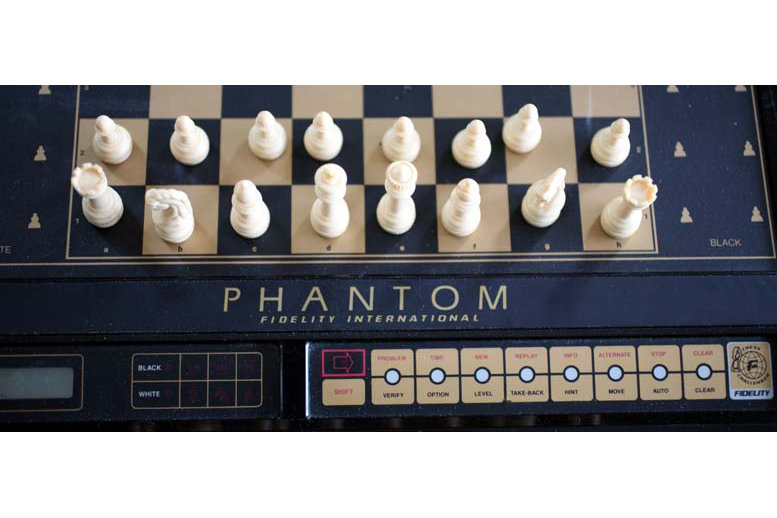|
Phantom Chess   Bill Buxton's NotesWhile not a chess player, I was certainly aware of the game (my father played) and the various electronic/computer chess sets that started to appear with the advent of consumer digital electronics. But this one – the Phantom, Model 6100, released by Fidelity International in 1988 - was different, and despite not playing the game, I had to have it. The reason was that it did something different than the others, and was an example of something that I thought was very important: an almost transparent blend between the physical and the virtual worlds. This was around the time, circa 1993-94, that George Fitzmaurice, myself, and later Hiroshi Ishii, were beginning to look into what became known as "graspable" or "tangible" user interfaces. By its integration of the physical and virtual, this game exemplified exactly the kind of attributes that we were trying to achieve. In short, it was a wonderful reference object that helped set the bar, and remind us what we were about. For the human player, this game was pretty much like any other. In fact, if two people wanted to play, it was exactly like any other. You just set the pieces on the board and got down to it. On the other hand, if you were alone, but still wanted an advisory to test your game against, you also just set up the pieces, but this time you only did two things differently. First, you turned the computer on. Second, when you made a move, you had to slightly push the piece down on the board. What then transpired was then almost magic. You played your game your way, and the computer played its own game, but did so by moving the same pieces as a human opponent would have. The way it did so was invisible. Within the chess board, below the surface, was a robot arm with a magnet on the end. Likewise, each piece also had a magnet on the bottom. While the actual pieces were indistinguishable from each other to the computer, that didn't matter. It knew the starting positions for chess, so then only needed to keep track of each throughout the game. Hence, it would just pace the arm under the piece it wanted to move, magnetically "grab" the piece, and slide it to the desired collection. And, since it knew where all the pieces were, it would temporarily move any pieces blocking tis path out of its way during the move. To do this, however, it needed to know where the human's pieces were. This explains why the human had to push their pieces into the board when making a move. Just think of each square on the board, as well as the border around it, as being a pressure-sensitive switch. Pushing down at the start of the move could then inform the computer which piece you were moving. Pushing down on placing a piece, let it know where its new position was. The most uncanny experience in all of this resulted when you had the computer play itself. It is simply a very different experience to see a computer playing itself using physical chess pieces, compared to a virtual chess board on a computer screen. The first version of the Phantom Chess Computer was released in 1983 by Milton Bradley, now part of Hasbro. When they stopped production, the product was picked up by Fidelity International, who released a slightly modified version, the one that I have. A version of the product is still on the market, called the Phantom Force, available from ExcaLibur Electronics. ReferencesWeb Pages Video
Articles
Bill Buxton Device Details
Company: Fidelity International |
Year: 1988 |

